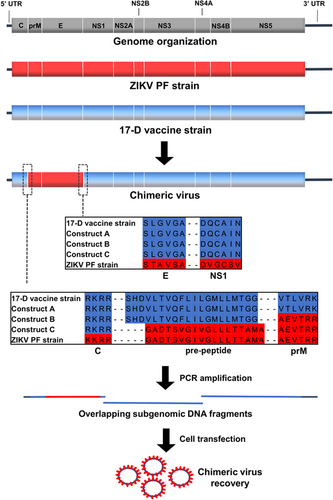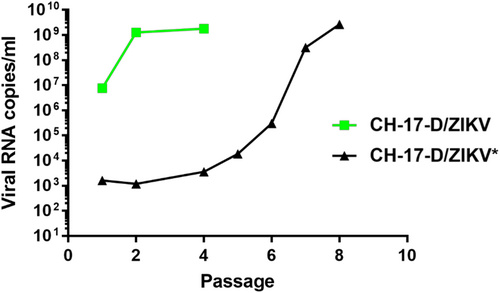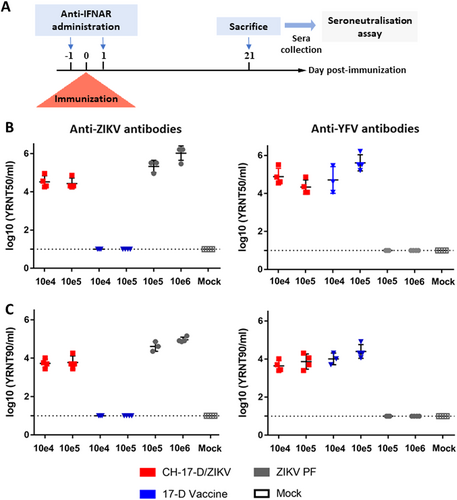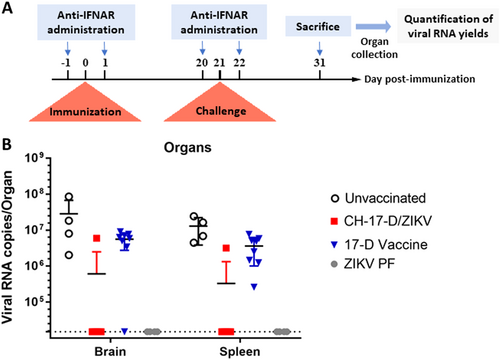Figures & data
The two cleavage sites are enlarged in boxes, with the amino acid alignment shown with separations between different proteins

A mix of BHK-21/HEK-293 cells was transfected. Cell supernatant medium was subsequently passaged 4–8 times in Vero-E6 cells. Viral production in cell supernatant medium was assessed using a real-time quantitative RT-PCR assay

Mutations detected during the passages that followed cell transfection of chimeric viruses
a Expression of the ZIKV E protein in Vero-E6 was confirmed at day 2 and 5 post-infection using an indirect immunofluorescence assay with a specific ZIKV immune serum as the primary antibody. Uninfected cells (mock) and cells infected by ZIKV and the 17-D vaccine strain were used as controls. b–d Comparative growth kinetics of the CH-17-D/ZIKV and ZIKV 17-D vaccine strains in HUH7.5 (b), HEK-293 (c), and Vero-E6 cells (d). e,f Comparative growth kinetics of the CH-17-D/ZIKV and ZIKV 17-D vaccine strains in Vero cells. Cell supernatant medium was harvested at different time points after infection to assess the amount of viral RNA present using a real-time quantitative RT-PCR assay (e; expressed as the means ± SD) and the infectious titers using a TCID50 assay (f; expressed as the means ± SD)

a Experimental timeline. b, c Groups of four mice were immunized with two doses of CH-17-D/ZIKV, ZIKV, and the 17-D vaccine strain (from 10e4 to 10e6 TCID50). Twenty-one days later, sera from mice were tested for the presence of antibodies to ZIKV and YFV using a viral RNA Yield Reduction Neutralization Test. The results are expressed as individual log of YRNT50 (b) and YRNT90 titers (c) with mean values ±SD represented by black lines with error bars, respectively

a Experimental timeline. b Amounts of viral RNA in brain and spleen samples collected during challenge experiments (cf. Table ) measured using a real-time quantitative RT-PCR assay. Mean values ± SD are represented by black lines and error bars, respectively. The results from both doses of viruses are pooled

Protection of transitory immunocompromised mice challenged with a heterologous strain of ZIKV
